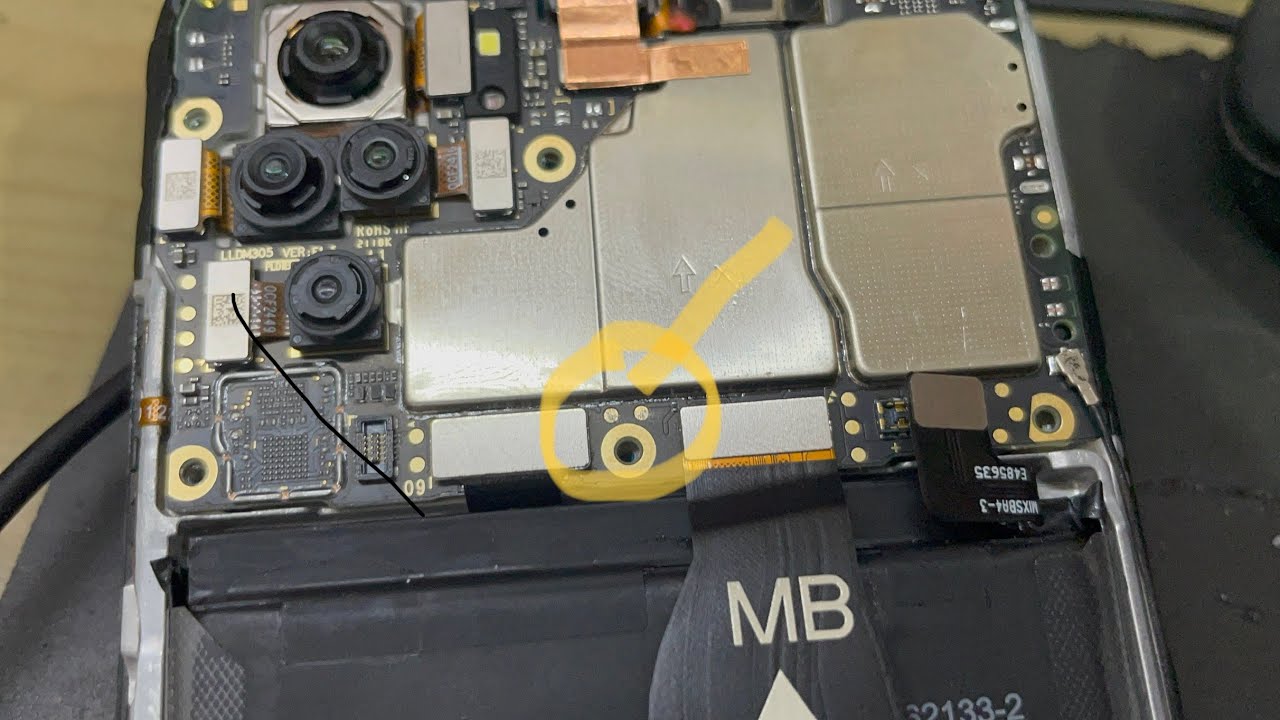
Xiaomi Mi Note 4 EDL Test Point? Xiaomi Mi Note 4 FRP bypass tool? Xiaomi Mi Note 4 MI account remove file? how to unlock Xiaomi Mi Note 3?
Are you looking for a way to bypass FRP (Factory Reset Protection) and MI Account on your Xiaomi Mi Note 4 device?
If so, then this blog post is for you! In this guide, we’ll show you how to use the EDL test point method to easily remove FRP and MI accounts from your Xiaomi Mi Note 4 device.

By following the step-by-step instructions in this post, you can quickly and easily unlock your device without any hassle. So let’s get started!
Finding The EDL Test point On The Xiaomi Mi Note 4

To bypass the FRP lock and remove the MI account from the Xiaomi Mi Note 4, you will need to access the EDL test point.
To do this, the back cover of the device must be removed, exposing the battery and the motherboard. Once the back cover is removed, look for two small pins labeled “EDL” near the top right corner of the device. These two pins are the EDL test point.
Using a thin flat-head screwdriver, gently apply pressure to each of the two pins in turn. This will cause the Xiaomi Redmi Note 10 to enter emergency download mode, allowing access to its inner workings.
Once in EDL mode, you can now begin to remove the FRP lock and MI account from the device.
Steps To Remove FRP And MI Accounts Using EDL Test Points
- First, you will need to locate the EDL test point on the Xiaomi Mi Note 4. Depending on the model, the EDL test point may be located on the back of the phone near the power button, or it may be located inside the phone near the battery.
- Once you have located the EDL test point, you will need to apply the proper voltage to the test point. The exact voltage required for the test point will vary depending on the device and model, so you should refer to your manual or online instructions to ensure that you are applying the correct voltage.
- After applying the proper voltage, you can then proceed to remove the MI account from the device. To do this, you will need to open a command prompt window and type in the following command: “fastboot oem unlock”. This command will allow you to unlock your device, thus removing the MI account from the phone.
- Finally, you can then proceed to remove the FRP lock from the device. To do this, you will need to open a command prompt window and type in the following command: “fastboot oem frp-unlock”.
This command will allow you to unlock the FRP lock from your device, thus allowing access to your device without having to enter any passwords or patterns.
By following these steps, you should now be able to successfully remove both the MI account and FRP lock from your Xiaomi Redmi Note 10 device using an EDL test point.
Precautions To Consider While Removing FRP And MI Account
When attempting to remove FRP and MI Accounts from a Xiaomi Mi Note 4 device, it is important to take certain precautions.
Firstly, you should ensure that the device is turned off and the battery is removed before attempting to access the EDL test point.
Furthermore, you should use a multimeter to confirm the correct voltage level before applying it to the test point. If the voltage is too high or too low, it could cause damage to the device.
Additionally, it is important to be aware of the safety risks involved when working with electronic devices. As such, it is recommended to wear protective equipment and work in a well-ventilated area with no combustible materials.
Also, if you are not experienced in this type of work, it is best to seek help from a professional. Finally, make sure that all components have been securely connected before powering on the device.
Risks Involved In Removing FRP And MI Accounts
Removing FRP and MI accounts from your Xiaomi Mi Note 4 can be a risky process if done improperly. As a result, it is important to understand the risks involved before attempting to remove either of these locks from your device.
The most important risk to consider when removing FRP and MI Account from your Xiaomi Mi Note 4 is that doing so could void your warranty.
This means that if you run into any issues with your phone, it is unlikely that your manufacturer will be able to help you. It is also possible that you could damage the device permanently if not done correctly.
Another risk associated with removing FRP and MI Accounts from your Xiaomi Mi Note 4 is that you may inadvertently expose yourself to potential security threats.
When you remove these locks, you are opening up your device to potentially malicious apps or malware. It is therefore important to ensure that you only use trusted apps and services when using your device after you have removed these locks.
Finally, you should be aware that removing FRP and MI accounts can also lead to data loss. When you do this, some of the data stored on your device may be lost in the process.
Therefore, it is important to make sure that you have all of your data backed up before attempting to remove either of these locks from your device.
By understanding the risks involved in removing FRP and MI Accounts from your Xiaomi Mi Note 4, you can make an informed decision about whether this process is right for you and your device.
While the risks may seem daunting, if done properly, they can help keep your device secure and protect you from potential threats.
About Xiaomi Mi Note 4
The Xiaomi Redmi Note 4 is a budget smartphone that comes with a screen display size of 5.5 inches under IPS LCD panel with a resolution of 1080 x 1920 pixels, 16:9 ratio (~401 ppi density). The handset has Qualcomm MSM8953 Snapdragon 625 (14 nm) chipset and is powered by Android 6.0 (Marshmallow), upgradable to 7.0 (Nougat), MIUI 11.





Leave a Reply